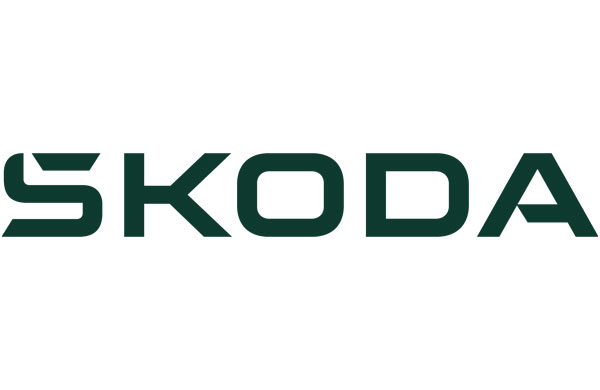Car Ignition Replacement: A Comprehensive Guide
The ignition system is a key element in any lorry, working as the gateway to beginning the engine and making sure that it runs efficiently. However, like any mechanical part, elements of the ignition system can stop working, making car ignition replacement a necessary treatment for numerous automobile owners. Comprehending the value of the ignition system, the signs it may need changing, and how to go about it can conserve time, cash, and frustration.
Understanding the Ignition System
Before diving into the replacement procedure, it is necessary to understand what an ignition system is and how it works. The ignition system in autos normally includes:
- Ignition Coil: Transforms low voltage from the battery into high voltage to develop a stimulate.
- Ignition Switch: Engages the electrical system to start the engine.
- Supplier: Channels the stimulate to the suitable cylinder.
- Trigger Plugs: Ignite the air-fuel mix for combustion.
As lorries have developed, many have actually transitioned to electronic ignition systems, which are more efficient but can also be more complex and pricey to repair.
Indications You Need an Ignition Replacement
Specific symptoms indicate that the ignition system may be stopping working. Being aware of these indications can trigger quick action, thus preventing prospective further damage. Here are some typical indications:
- Engine Won't Start: This could be due to numerous factors, however a malfunctioning ignition system is a prime suspect.
- Flickering Dashboard Lights: If the ignition switch is stopping working, it may lead to erratic electrical behavior, including flickering lights.
- Trouble Turning the Key: If the key feels stuck, it could be a sign of a stopping working ignition switch.
- Unusual Engine Noise: If there is a rough or irregular engine efficiency, it may suggest concerns within the ignition system.
- Milky Smoke from Exhaust: This can show problems in combustion, possibly connected to malfunctioning ignition components.
The Costs of Ignition Replacement
Understanding the costs involved can help in budgeting for ignition replacement. Expenses vary substantially based upon the make and model of the automobile, as well as the region. A breakdown of approximated costs is offered in the following table:
| Component | Estimated Cost (Parts Only) | Labor Cost (Average) | Total Estimated Cost |
|---|---|---|---|
| Ignition Coil | ₤ 50 - ₤ 250 | ₤ 100 - ₤ 150 | ₤ 150 - ₤ 400 |
| Ignition Switch | ₤ 20 - ₤ 100 | ₤ 100 - ₤ 150 | ₤ 120 - ₤ 250 |
| Stimulate Plugs (set of 4) | ₤ 10 - ₤ 100 | ₤ 50 - ₤ 100 | ₤ 60 - ₤ 200 |
| Distributor Cap | ₤ 10 - ₤ 50 | ₤ 50 - ₤ 100 | ₤ 60 - ₤ 150 |
| Overall Range for Replacement | ₤ 250 - ₤ 300 | ₤ 300 - ₤ 450 | ₤ 550 - ₤ 750 |
Keep in mind: Costs might vary based upon area and particular car models.
Do it yourself vs. Professional Replacement
Car owners often face the dilemma of whether to undertake ignition replacement themselves or to look for professional assistance. Below are some advantages and disadvantages for each choice:
DIY Replacement
Pros:
- Cost Savings: Saving on labor costs can make replacement more economical.
- Learning Opportunity: For those interested in cars and trucks, it offers an opportunity to find out more about vehicle mechanics.
Cons:
- Time-Consuming: It might take longer than expected, especially for those without experience.
- Danger of Errors: Mistakes can lead to more damage or a hazardous automobile.
Expert Replacement
Pros:
- Expertise: Professionals are trained and experienced, guaranteeing the task is done right the very first time.
- Guarantee: Many shops offer a warranty on parts and labor, offering assurance.
Cons:
- Higher Costs: Labor can substantially increase the overall cost of replacement.
- Scheduling: Needing to find time for a shop appointment can be bothersome.
Steps for Ignition Replacement
Ought to you choose to undertake the job of replacing your ignition system, understand that it can be carried out as follows. Here is a detailed guide:
- Gather Tools: You will need a set of wrenches, screwdrivers, shatterproof glass, and potentially a multimeter for testing.
- Detach Battery: Remove the negative booster cable to ensure security during the replacement.
- Eliminate Old Components: Depending on which part of the ignition system needs replacement, unscrew and remove the defective elements.
- Install New Parts: Reverse the removal actions, ensuring that each part is effectively connected and screwed in.
- Reconnect Battery: Once everything is reassembled, reattach the unfavorable booster cable.
- Test the System: Turn the key in the ignition to inspect that the vehicle begins efficiently.
Frequently Asked Questions (FAQs)
Q1: How typically need to the ignition system be inspected?A1: It is encouraged to inspect the ignition system throughout routine lorry maintenance checks, a minimum of as soon as a year or every 15,000 miles. Q2: What are the dangers of overlooking ignition problems?A2: Ignoring ignition problems can lead to more considerable engine problems,
leaving you stranded and potentially sustaining greater repair expenses. Q3: Can I replace parts of the ignition system individually?A3: Yes, specific elements (like the ignition coil
, switches, or stimulate plugs )can be changed independently. Nevertheless, it is vital to evaluate the whole system to avoid future problems. Q4: Are there particular brands of ignition system elements that are better?A4: Many car owners prefer OEM(Original Equipment Manufacturer) parts for ignition replacement, as
they often offer an accurate fit and trusted efficiency. Changing your car
's ignition system can be a crucial part of car upkeep. By being mindful of the indications of malfunction, expenses included, and replacement treatments, car owners can guarantee
their lorries stay in optimum working condition. Whether choosing DIY repairs or expert support, attending to ignition problems immediately can contribute to a more secure, smoother driving experience.

